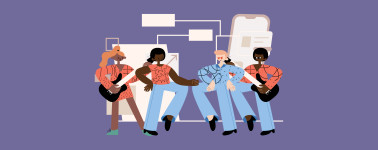Top Small Business Loans of 2025
Find your loan and get financed as fast as 24 hours.SB1
How much do you want to borrow?
Find Your Small Business Loan with Lantern
Small Business Loan Uses
Buy commercial real estate Purchase or repair equipment Cover working capital expenses Buy inventory at a discount and/or in preparation for a busy season Add to the kinds of products offered
Types of Small Business Loans
SBA loans
7(a) Loans Can be used for nearly any business need, including but not limited to: Working capital Equipment purchases Commercial real estate Renovating an existing building Establishing or acquiring a business Refinancing existing business debt (under certain conditions)
Maximum amount of $5 million Must do business in the U.S., have invested equity, and have used other financial resources, among other requirements
504 Loans Certified Development Companies (CDCs) work with the SBA to provide up to $5 million for growing businesses Provides funding for things like: Purchase or construction of existing or new facilities Equipment and machinery Modernizing land, streets, and parking lots Renovating existing business facilities
CANNOT be used for: Working capital or inventory Consolidating, repaying, or refinancing debt Speculation or investment in rental real estate
Long-term, fixed-rate loans Eligible businesses must be in the U.S., be worth less than $15 million, and have an average net income of less than $5 million
Microloans Nonprofit, community-based lenders work with the SBA to provide small businesses with funds to repair, renovate, or expand their operation Worth up to $50,000, but average amount is $13,000
Term loans
Commercial real estate loans
S- and C-Corporations Funds Trusts Limited partnership Limited liability company (LLC)
Long-term commercial real estate loans – terms between 5 and 25 years and often used for construction, land development, or property purchases. Short-term commercial real estate loans – these are sometimes bridge loans, which can prove convenient but might be more expensive than the long-term ones
Microloans
A microloan connects a borrower and a lender for a non-traditional, smaller loan. Startups and small businesses that might have trouble obtaining a traditional loan can grow thanks to a microloan, offered by nonprofits, government agencies, or individual lenders. Nonprofit, community based lenders work with the SBA to provide small businesses with funds to repair, renovate, or expand their operation A microloan is worth up to $50,000, but average amount is $13,000
Working capital Inventory or supplies Furniture or fixtures Machinery or equipment Seasonal expenses
Additional Small Business Financing Options
Business line of credit
May be used for any type of purchase If balance is paid off monthly, it can be an affordable way for business owners to maintain cash flow Can be valuable for covering gaps in cash flow or emergency expenses
Equipment financing
Equipment could be new or used Equipment usually acts as collateral for the loan Depending on the lender, financing may be available for up to 100% of equipment cost
Invoice factoring and financing
Both may help improve cash flow when waiting on payment from unpaid invoices. Exercise caution: With fees and relatively high rates, invoice factoring can be costly—particularly if customers delay payment.
Business credit cards
Business credit cards allow small business owners to separate their company’s expenses from their own–very helpful at tax time These cards often come with cash-back and special travel perks, but they lack some of the consumer protections that are required on credit cards for individuals.
Where Can I Get a Small Business Loan?
Banks Refers to traditional brick-and-mortar banks (though they may also have online services Could have more favorable terms and rates compared to online lenders, especially if you already have a relationship with the bank Application process is often lengthy May have more stringent eligibility requirements
Credit Union Member-owned, non-profit entities that may have brick-and-mortar locations as well as online services Often have competitive terms and rates Frequently have flexible qualification requirements for members More likely to be focused on helping the local community
Online Lender Applications often reviewed quickly Funds typically dispersed in a matter of days Can easily compare lenders May be more open to those with poor credit or a short history Online small business lenders generally have higher APRs than other options
P2P Network Business owners are matched with investors on the P2P platform Odds of qualifying may be higher compared to other types of lenders, even with bad credit Fast application and quick time to funding Could have transaction fees others don't Platforms facilitate transfers and payments
What Do I Need to Apply for a Small Business Loan?
Good business and personal credit scores Strong business plan A well-established company Acceptable revenue history Low debt-to-income (DTI) ratio
How to Apply for a Small Business Loan
Evaluate your business and personal credit history against the minimum requirements of the lenders you're considering to determine what you'll qualify for. Prepare relevant documentation like bank statements, legal documents, business expenses, and tax returns. Come up with a required-document checklist. Shop small business lenders and see who can give you the right financing for your specific business needs. Apply with the lender(s) that suit your business needs and qualifications. Bank business loan applications require a hard credit pull, so prepare yourself for temporary damage to your credit score.
How Do I Choose the Best Small Business Loan for My Needs?
How much funding you need: Small business lenders have different maximum loan amounts they’re willing to lend to borrowers. Why you need it: Is it an emergency expense that requires a quick application and time-to-funding? Or is it a larger expense that requires more time to compare rates and lenders? The type of loan you want: Different business loans are crafted for different business uses. Think about what best aligns with your qualifications and the reason you need funding. Whether you meet requirements: Try to be realistic with yourself about the strength of your credit and business history when going after the best small business loans. Focus your attention on the types of loans and lenders that can offer you the best rates for your qualifications. How much of a monthly loan payment you can afford: Running a business is expensive. You’ll want to make sure you find a loan with rates and terms that allow you to make the monthly payments without cutting too deep into your business’ cash flow.
Small Business Loan Application Tips for Beginners
Small business loans for women Small business loans and grants for disabled veterans Business loans, grants, and resources for Hispanic and Latinx Owners Guide to small business loans for minorities
Solve a problem for a customer Exist in a space that isn’t too crowded Can be executed in a strategic space where you will hold an advantage Fill a critical customer need that may not be obvious to them
Out-of-date financial records Unclear case for how funds will be used Ignorance of business credit score Skeletal business plan Applying for wrong kind of loan Not enough free capital to pay loan








